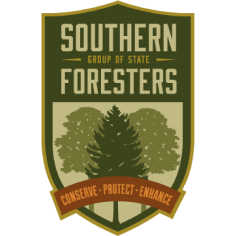Learn to prepare your community and urban tree canopy ahead of storm events and natural disasters.
Click the plus next to each heading to read more about the Community leader courses
Storm events such as thunderstorms, tornadoes, hurricanes and ice storms can severely impact your community’s trees. Is your community ready to respond to and recover from a tree-damaging storm event? Did you know some of this tree damage can be prevented through proactive tree management?
Readiness
We can’t control the weather, but we can make sure we are ready. This includes preparing our urban forests to be more resilient. Development of a Community Forest Storm Mitigation Plan is a huge part of the readiness phase of natural disaster management. Mitigation includes managing trees before the storm.
Structurally defective trees are more susceptible to storm damage. Identifying those defective trees before a storm strikes and pruning or removing these trees (in addition to regular maintenance pruning of all trees) will reduce tree damage during a storm. Developing a Community Forest Storm Plan will help your community prepare for storms by identifying the major tasks that should be completed before a storm, establishing who should complete these tasks and securing the resources needed to begin storm response and recovery.
Response
As a community leader, you may be called to action to ensure completion of storm-damaged tree assessment work, event action planning and emergency tree risk mitigation.
Recovery
After the initial response and emergency tree-damage work is completed, some remaining trees will still have varying degrees of damage, which could present a hazard to residents. These damaged trees should be assessed and inventoried into a list of trees to be removed.
Communities should aim to keep and maintain as many viable trees as possible. To fully realize and maintain their many societal and environmental benefits, invest in your community trees as you do with other elements of your community’s infrastructure. By completing recovery work soon after a storm or natural disaster event has occurred, communities can prevent the damages and costs of inaction.
Contact your state Urban Forestry Coordinator for additional information and assistance.
Community Leader Courses are available for anyone interested in supporting the storm readiness, response and recovery of community forests. We recommend these courses to community representatives such as emergency management and response professionals, city and county arborists and landscape professionals, city planners, elected officials and those that serve on local tree boards or other related boards and committees.
This course is designed to provide information to communities about how to prepare for and respond to a storm event.
Train your eye with modules that display real-life examples of trees and where they fall within the FEMA vegetative debris criteria.
In order to proceed and take the course(s), choose the button for either the Community Planning for storm events or the fema debris criteria: train your eye courses.
If you have any questions or concerns contact your State Urban Forestry Coordinator.

